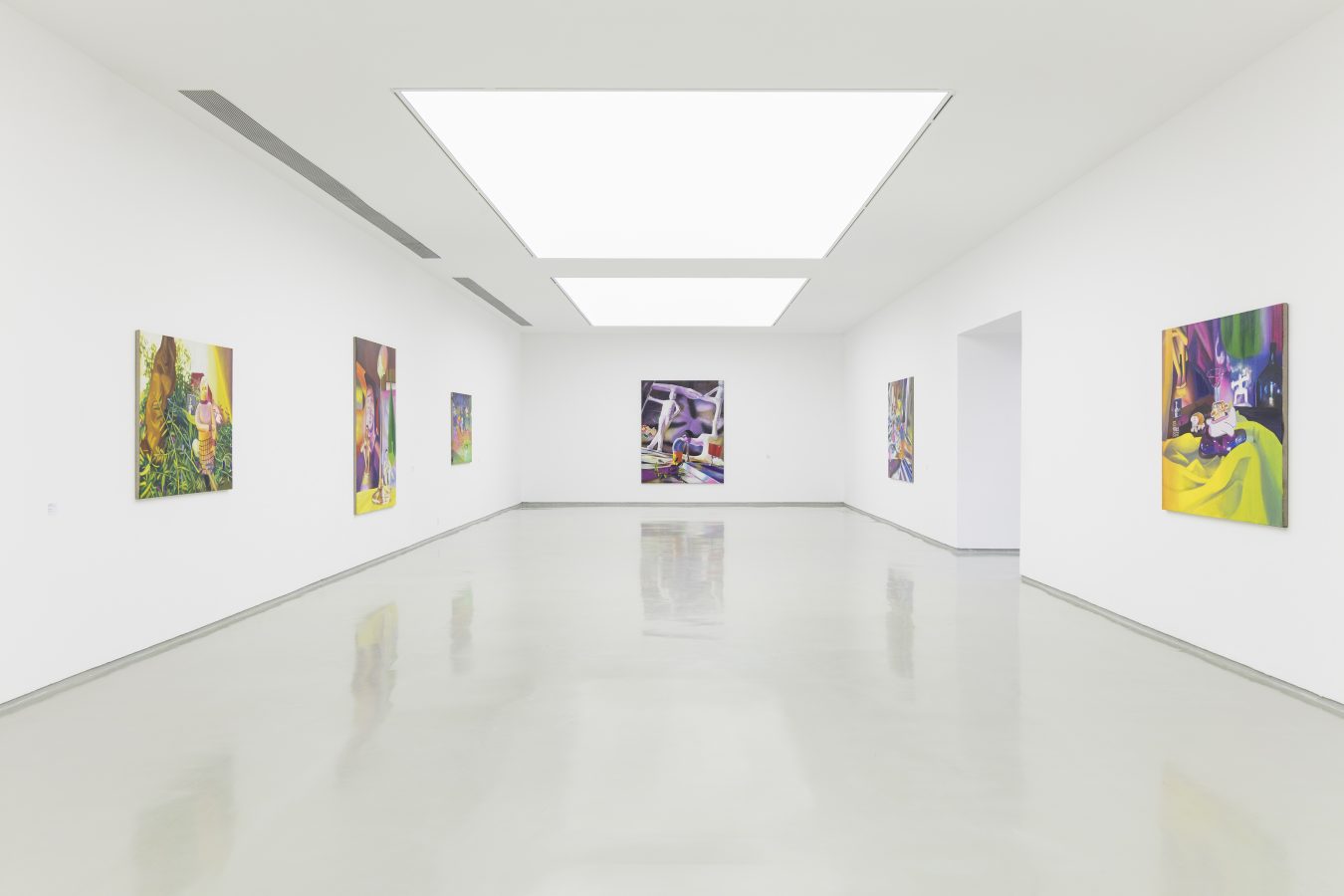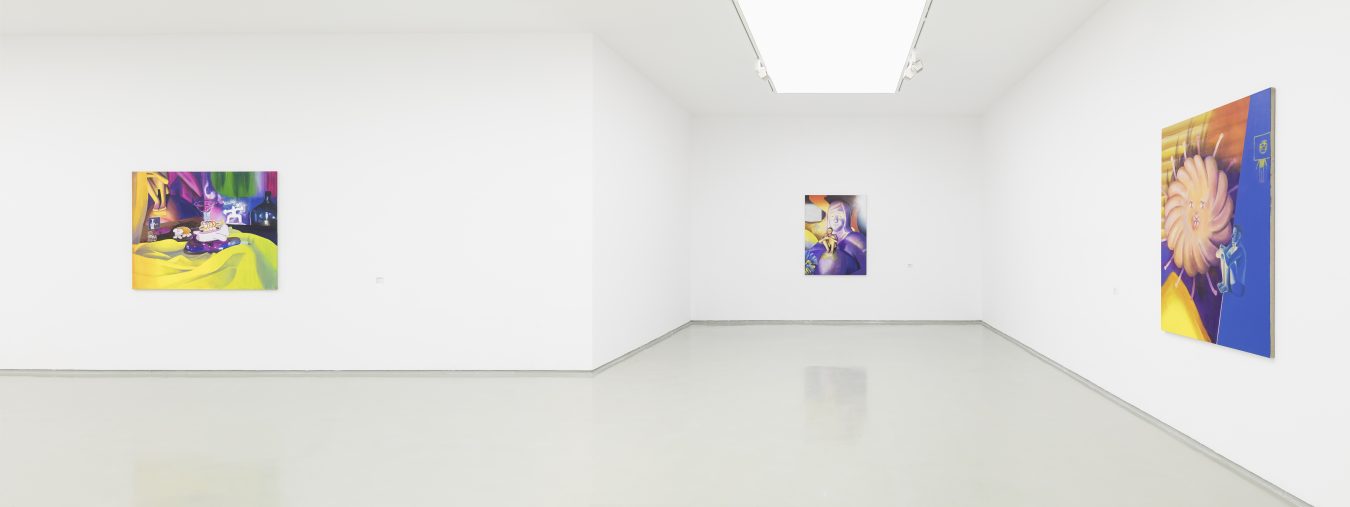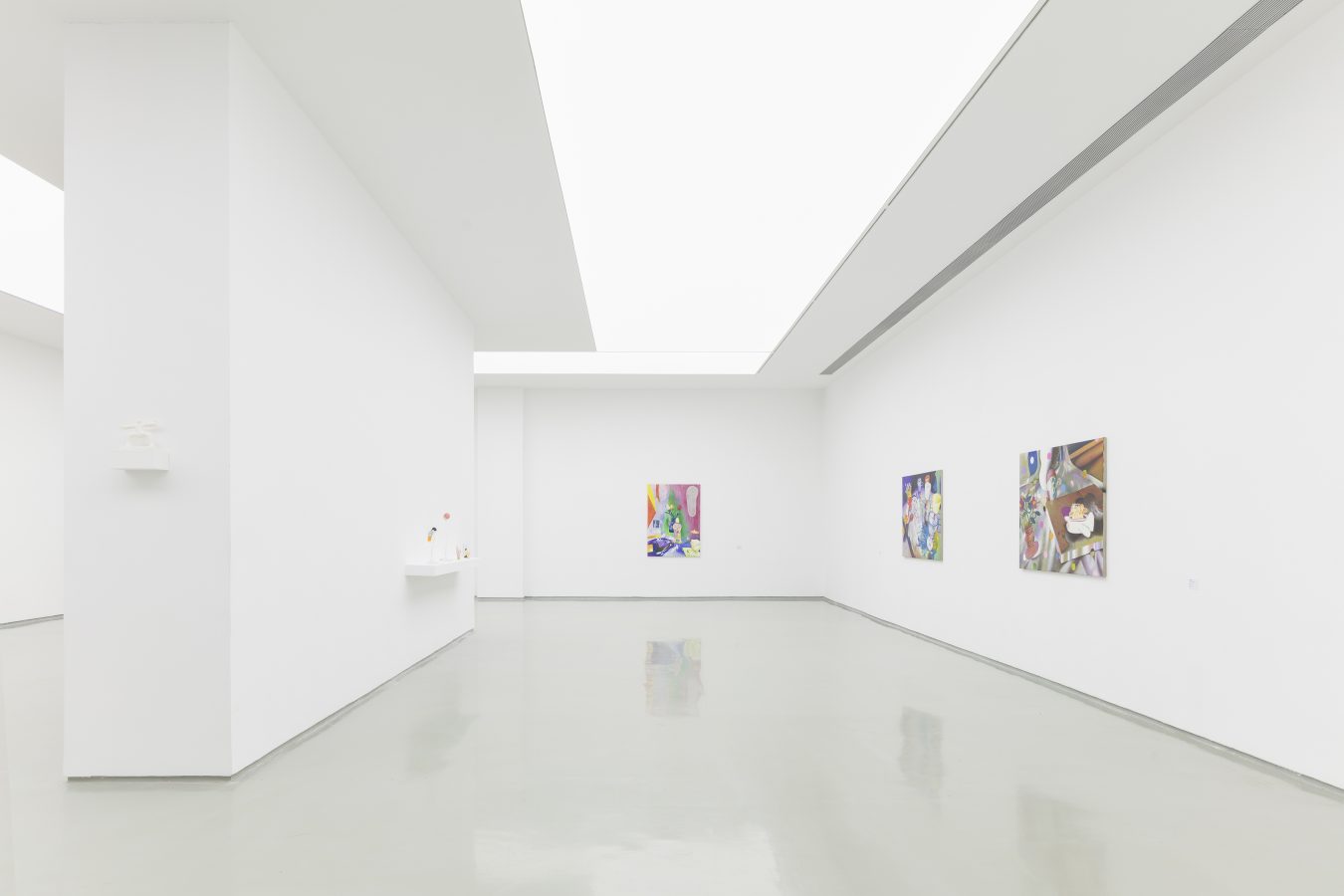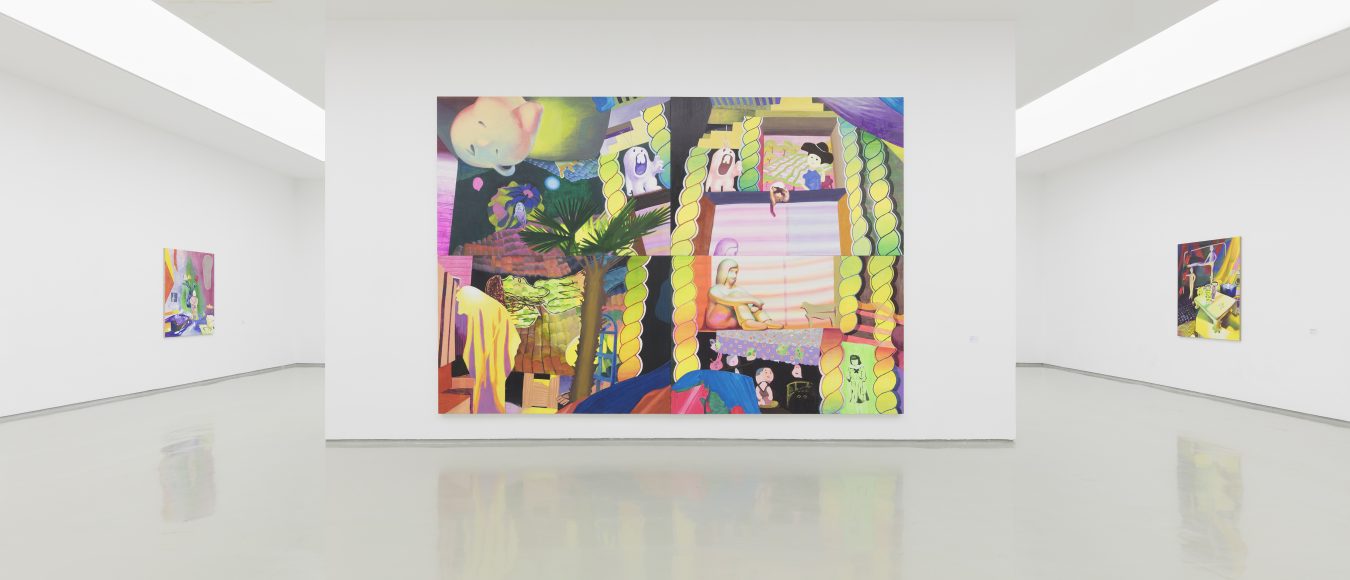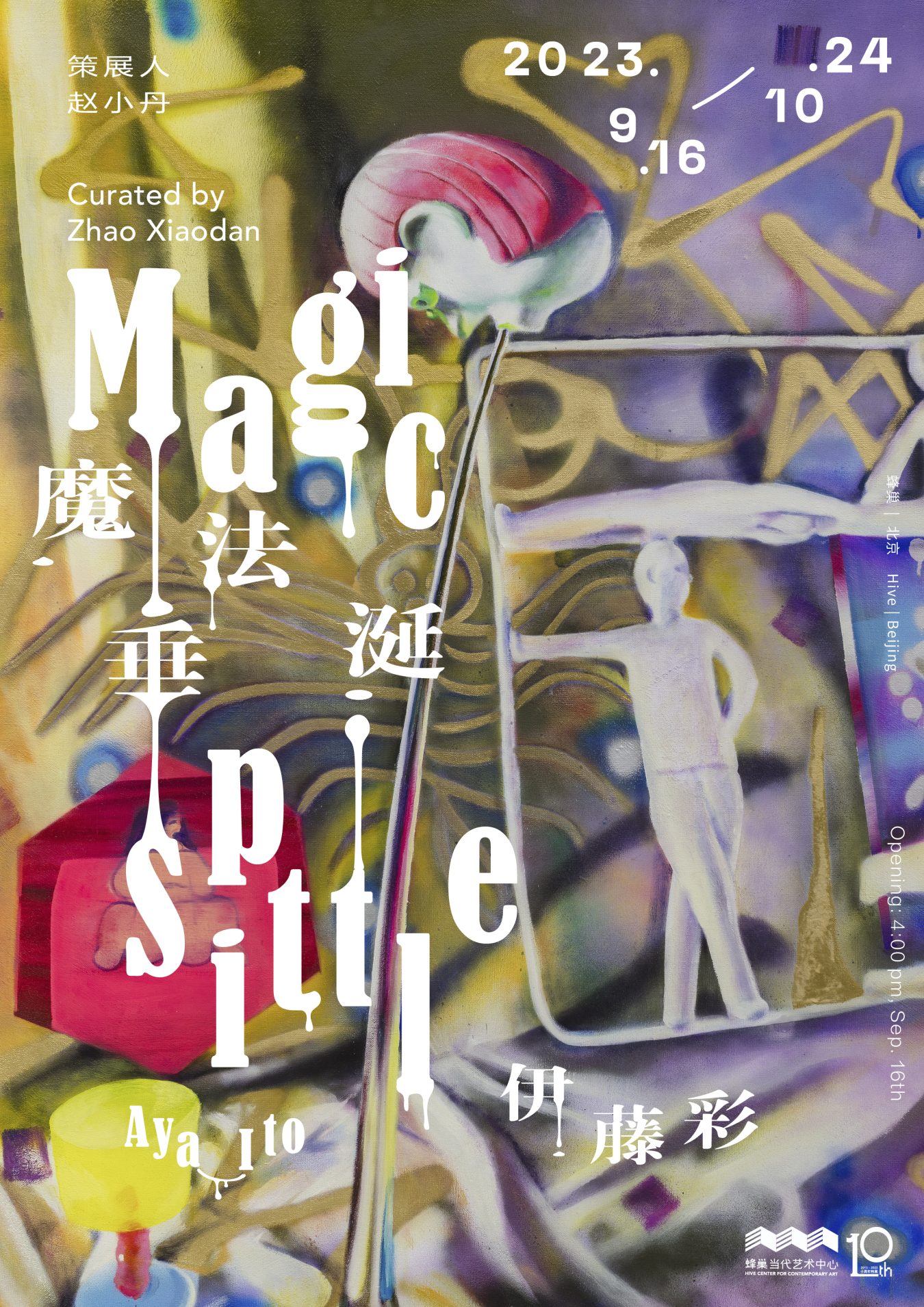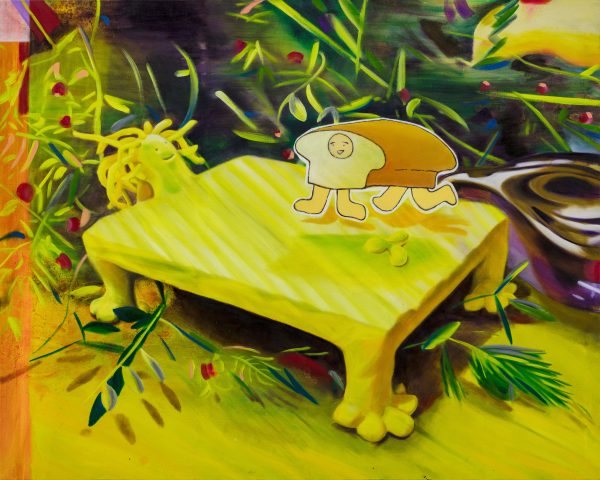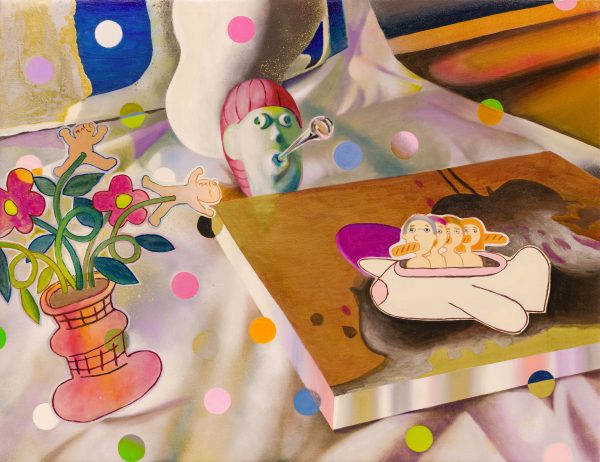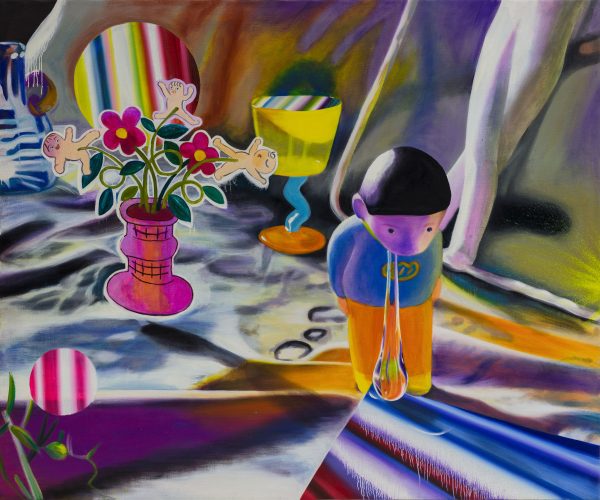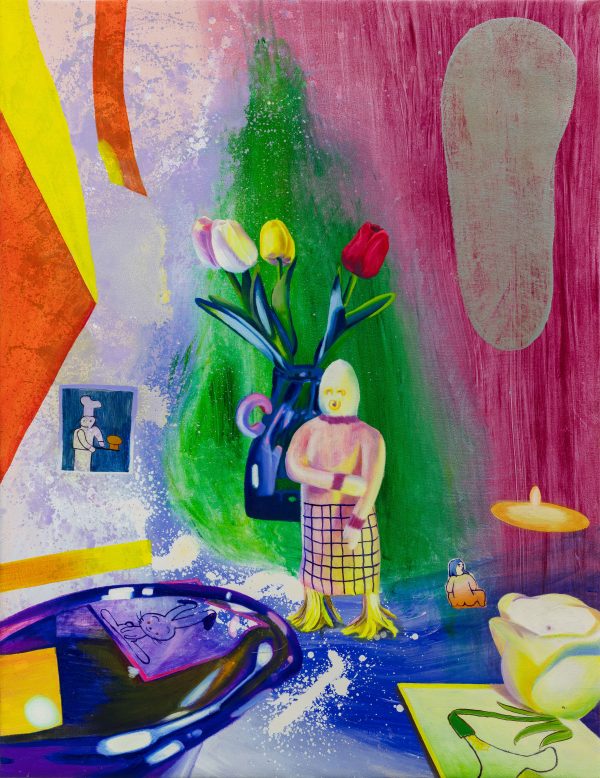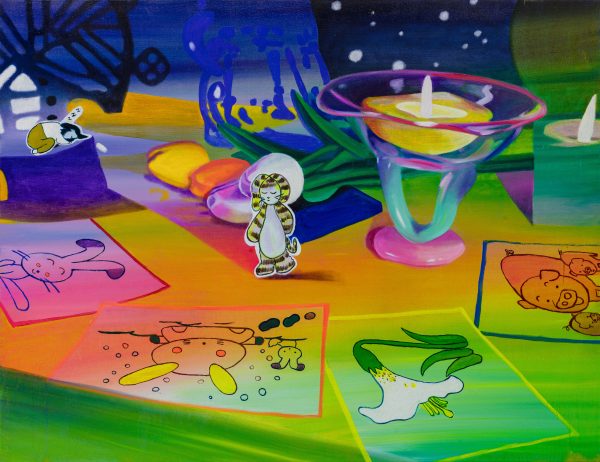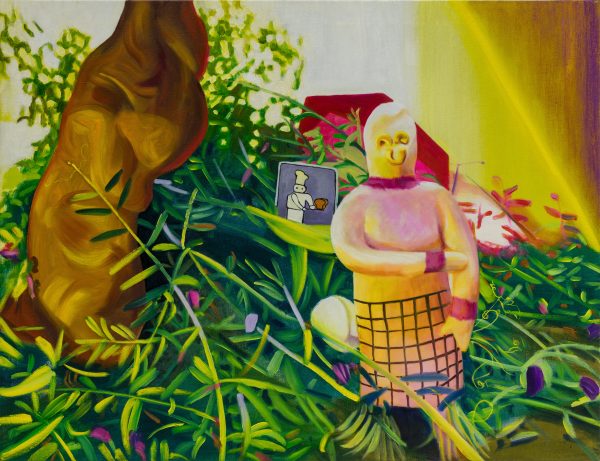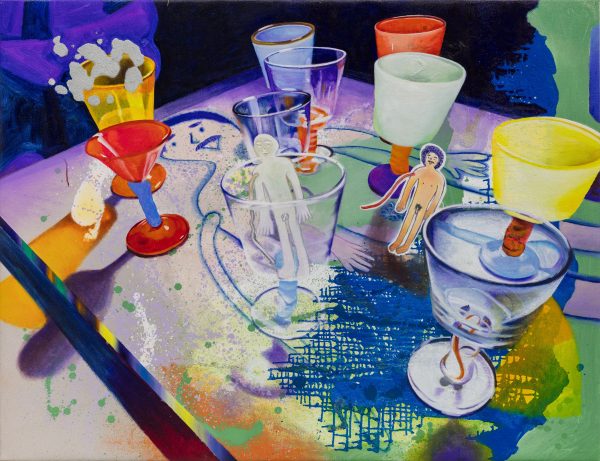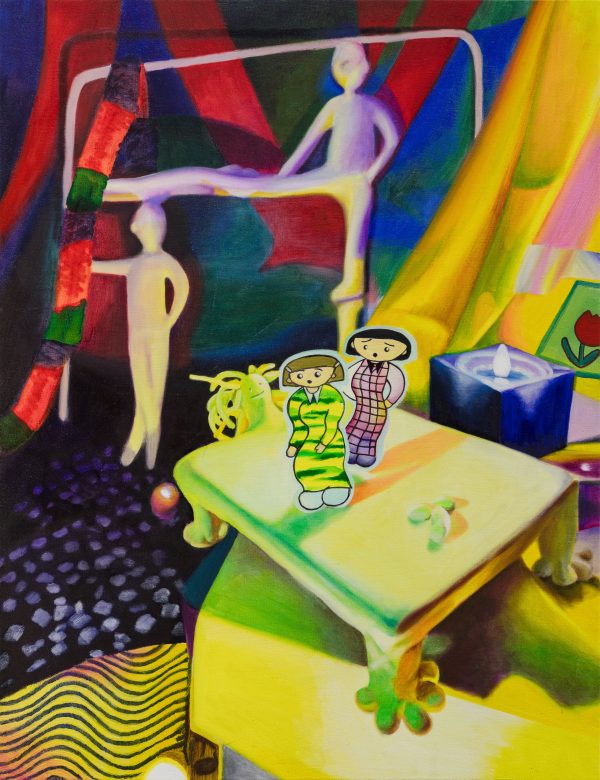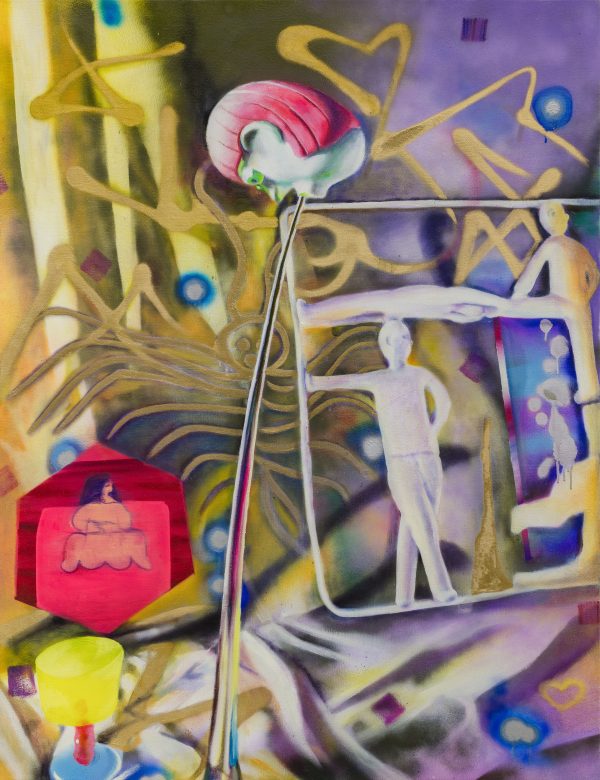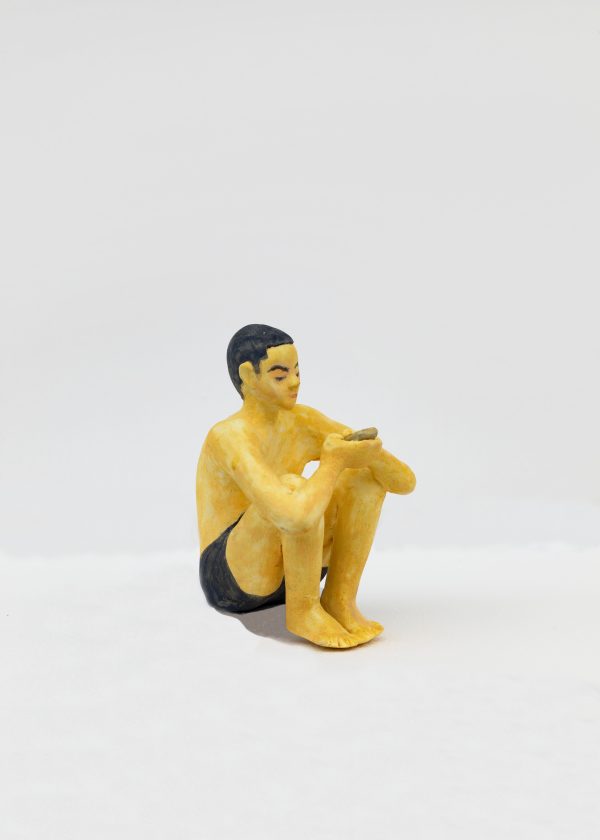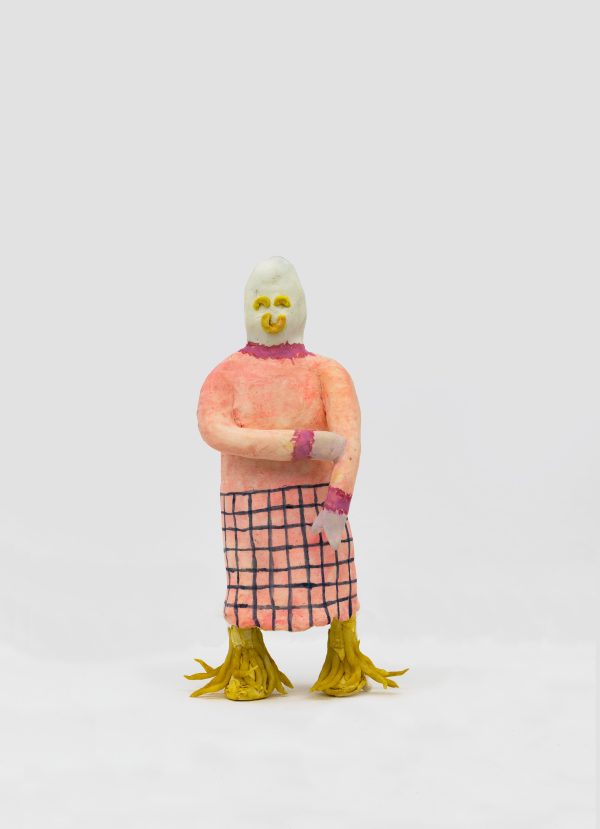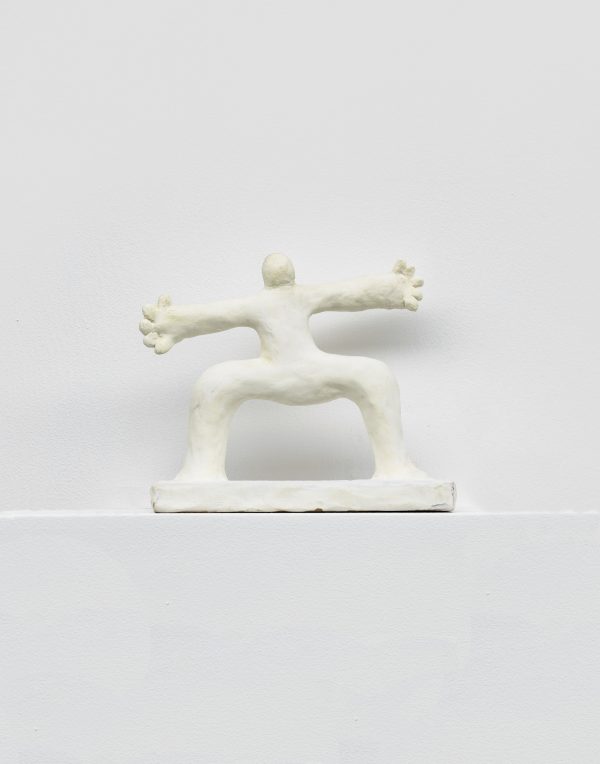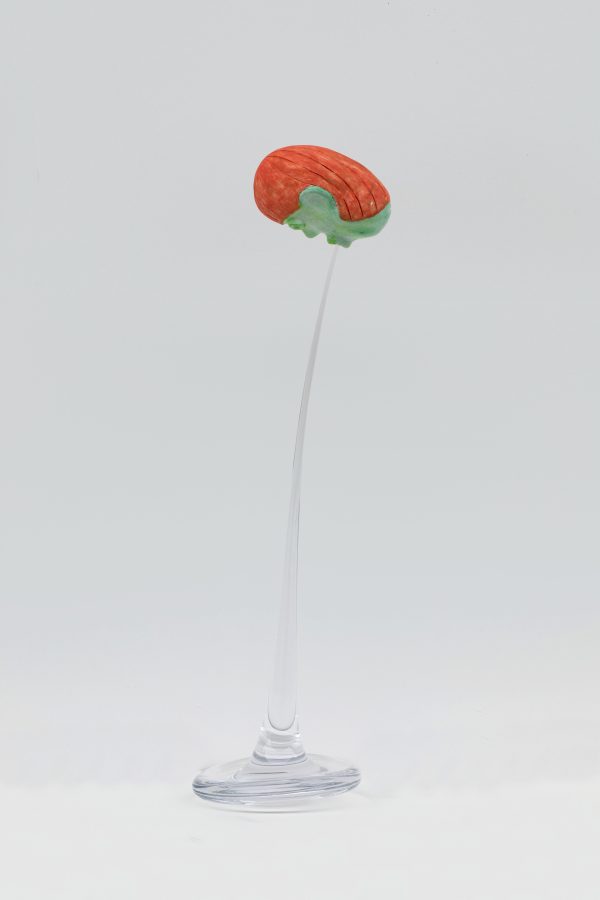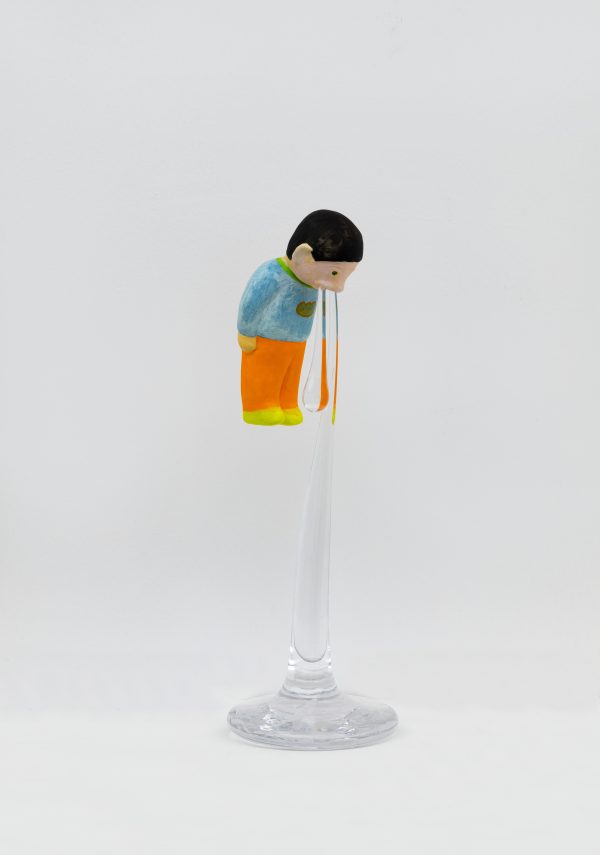Artist: Aya Ito
Curator: Zhao Xiaodan
Hive Center for Contemporary Art is thrilled to present the opening of Magic Spittle, Aya Ito’s first solo exhibition in China, on 16 September, 2023 in galleries B and C at Hive Beijing. The exhibition is curated by Zhao Xiaodan and is on view until 24 October. Ito’s eclectic approach involves various media, including painting, sculpture, readymade objects, video, and photography, while vibrantly incorporating her personal transformation and growth into her works. For Ito, art is a way of extrication from a materially saturated existence. Confronted with the present that is influenced by uncertainty and diversified values, the artist deciphers in a loose manner the gravity of reality accumulated in layers. This exhibition presents Ito’s latest paintings and sculptural works while serving as a significant chapter in highlighting the artist’s creative practice.
Born in 1987 in one of the most prestigious orange groves in Wakayama Prefecture, Japan, Aya Ito was the youngest of five children in her family. With a permissive household and a large age gap between siblings, Ito has been an observer of comprehensive sensory amplification since childhood. Although console games such as Super Mario, The Legend of Zelda, and Final Fantasy, produced by Nintendo and Square Enix, were widely popular in Japan in the early 1990s, Ito was not particularly enthusiastic about them, even though she watched her brothers play them every day. Instead, it was painting, paper clay, pottery, and collage that provided Ito with her earliest exposure to art as well as removed her from the dull and mundane perception of daily life. Before attending Kyoto City University of Arts, with the development of her subjective consciousness, Ito had progressed from the traditional creative method of painting, and her understanding and love of sketching had gradually been transformed by a new structure that emphasised colour and bodily perceptions.
In the way that Ito regards herself as a vessel, art becomes a coherent and living companion that gradually evolves out of what has been acquired. There has never been any disconnection between Ito and her practice; her work not only reflects reality but also responds authentically and directly to the tension and relief of perception. At the first glance, the vibrant, energetic, dynamic images full of flexibility and the overwhelmingly intense information appear bizarre and difficult to unravel. Yet, these paintings are not the product of her imagination. During the years she spent at Kyoto University of Arts, in an attempt to address the issue of composition, Ito placed the familiar media through the construction of physical scenes, creating an environment of light and shadow that is either natural or artificial, or both. Each temporary scene that is subject to her practice is not only to be viewed from around, but even to be navigated through. The objects placed in the scenes are not assigned special value or meaning by Ito; they are created, selected, and placed according to her intuition and experience at that moment. In other words, the scenes are her body; they are her perception; they are the derivation and projection of her consciousness.
Spirits and monsters of nature, the grotesque and the kitsch, they are like ghosts and dust that dwell in the quotidian, along with the angst and restlessness of a young girl’s adolescence, the ambiguous and vacillating references to desire and bodies with partial perceptual magnification are quintessential characteristics of Ito’s early practice. The production and filming of the physical scenes allowed Ito to drift and immerse herself in the dual identity of creator and interrogator of this embedded universe. While studying at Kyoto University of Arts, she visited the Royal College of Art in London as an exchange student to study sculpture, and in 2018, she completed a residency at the Royal Irish Academy in Dublin. The experience of working on a foreign farm triggered Ito’s memory of labouring in the orange groves of her homeland, for which she facilely makes sculptures of fruits and vegetables enlarged dozens of times, and speaks openly about the influence of Louise Bourgeois and Niki de Saint Phalle on her work, in particular inheriting the maternal nature from their works as anchor points and references. In fact, her friendship with DJ David have long helped her work with electronic music, characterised by intense confrontation and disruption, and the glittering lights that linger in between. These personal experiences have imbued Ito’s work with psychedelic vapour. Moving nomadically between Dublin and Wakayama, her works have become an intertwining and merging of the artist’s dual life experiences while the embedded universe expands and spreads in response to the tension of bodily perceptions, emitting glimmers of light like a treasure in a dark vacuum.
In her work, Aya Ito, in particular, emphasises a sense of disembodiment, in which the subject enters a floating, suspended vacuum. Whether it is the paper figures rendered with a few brushstrokes and the deliberately elongated shadows in the paintings to show their tangibility, the three-dimensional figures made of rice paper coloured and layered with light materials, or even the images carved out of solid wood, they all deliberately dissolve the centre of gravity and the gravitational pull of the materiality on a visual level. If the shift in Ito’s earlier works is related to the encounter of time and space, what is introduced in Magic Spittle is the maternal role that she has incorporated into the previous characteristics. The infant, with their strong sense of life, captures Ito’s attention by nature, and she intentionally reinforces her identity as an observer to compensate for the absence of memories at the beginning of her life journey. In Ito’s works, she places the chubby infant with blossoming flowers, the stem and root of a plant and the drooling of a newborn child who has not yet formed a reaction-control mechanism in the process of central nervous system development, both as a bodily residue and a reference to the fact that, despite the gradual maturation of human beings, the action of salivation, as an animal instinct, can be triggered any time through the use of symbols.
Although Ito does not presume an initial interpretation of these forms and their relationship, the gravitational relationship reflected in the images refers directly to the figure of a vomiting boy she created in 2012. The immediate correlation between the two reveals a distinctly existentialist and philosophical nature in Ito’s practice and decisions. Indeed, her grasp of the contingency of life and the banality of everyday life has encouraged her to prioritise the perception and experience of life. In her 2019 exhibition in collaboration with Richard Gorman, his minimalist abstract colour blocks are created from a visit to Ito’s hometown, while hers are compositions of colour blocks derived from his work. Gorman describes his paintings as nothing, while Ito’s are everything, to which Ito responds, “But nothing can be transformed into everything, and at the same time everything into nothing, no?” This dialogue, which confronts the vacuum of value, reveals Ito’s perspective that she does not identify with virtual or metaphysical illusions intended to provoke an intimate relationship between people and their desires.
Vision, as a direct vessel for the human senses, is a channel for outward projection and observation, as well as a conduit for the reverse influx of images that the rational system chooses to capture. We even want to acquire a device that is always directly connected to the sight in order to reach a kind of viscous and gelatinous bond, where the sculpted and shaped senses and desires are all forms compatible with the prison of modernity. Ito’s practice addresses such moments in which the absurdity and nonsense, as well as the messages that have been rejected from rationality, become her weapons to gather strength, overturn and break the shackles. When the human desires at the beginning of age were uncovered, those intrinsic elements hidden in the private and the dark reawakened and activated the severed perceptions. Ito’s multi-dimensional creative practice provides an observable coordinate, especially when we interpret her emphasis on the experience of life as a dissolution of the internalised anxiety of the stagnant present. It is, therefore, an opportunity for us to enter her universe through this exhibition.
About the artist
Aya Ito was born in Arida-city, Wakayama in 1987. She received her BFA&MFA from Department of Painting, Graduate Fine Art Program, Kyoto City University of Arts. Ito has studied as an exchange student at the Sculpture Subject of Royal College of Art (RCA) in London and conducted a residency at the Royal Irish Academy (RHA) in Dublin, Ireland in 2018. She currently lives and works in Dublin, Ireland, and Wakayama, Japan. Ito received “Arida City Cultural Award, Distinguished Service Award”(2022), “Wakayama Cultural Award, Encouragement Award”(2021), “Art Award Tokyo Marunouchi” (2011), “shu uemura Judge’s Prize (Yuko Hasegawa)” (2011), “Art Award Tokyo, Runner-up Prize” (2009) and “Art Camp in Kunst-Bau, Suntory Prize”(2007) . Ito’ s works are included in the collection of important institutions such as Hotel Shinwaka Lodge in Wakayama, Oike Clinic Ladies Plaza in Kyoto, The Bank of Kyoto, Hitotsubashi University in Tokyo, The JAPIGOZZI Collection, Kyoto City University of Arts and Montblanc Japan,.etc.


